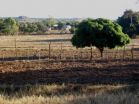(Press-News.org) The majority of Europe will experience higher warming than the global average if surface temperatures rise to 2 °C above pre-industrial levels, according to a new study published today.
Under such a scenario, temperatures greater than the 2 °C global average will be experienced in Northern and Eastern Europe in winter and Southern Europe in summer; however, North-Western Europe—specifically the UK—will experience a lower relative warming.
The study, which has been published today, 7 March, in IOP Publishing's journal Environmental Research Letters, also shows that in the summer, daily maximum temperatures could increase by 3 °C over South-Eastern Europe and the Iberian Peninsula and rise well above 40 °C in regions that already experience some of the highest temperatures in Europe, such as Spain, Portugal and France. Such higher temperatures will increase evaporation and drought.
In the winter, the maximum daily temperatures could increase by more than 6 °C across Scandinavia and Russia.
Lead author of the research Robert Vautard, from Laboratoire des Sciences du Climat et de l'Environnement (CEA/CNRS/UVSQ), said: "The 2 °C warming target has mainly been decided among nations as a limit not to exceed in order to avoid possibly dangerous climate change. However, the consequences of such a warming, at the scale of a continent like Europe, have not yet been quantified.
"We find that, even for such an ambitious target as 2 °C, changes in European climate are significant and will lead to significant impacts."
The study also shows that there will be a robust increase in precipitation over Central and Northern Europe in the winter and Northern Europe in the summer, and that most of the continent will experience an increase in instances of extreme precipitation, increasing the flood risks which are already having significant economic consequences.
Southern Europe is an exception, and will experience a general decline in mean precipitation.
To arrive at their conclusions, the researchers used an ensemble of 15 regional climate models to simulate climate changes under an A1B scenario, which represents rapid economic growth and a balanced approach to energy sources.
In addition to temperature and precipitation changes that may occur, the researchers also investigated atmospheric circulation and winds, but found no significant changes.
"Even if the 2 °C goal is achieved, Europe will experience impacts, and these are likely to exacerbate existing climate vulnerability. Further work on identifying key hotspots, potential impacts and advancing carefully planned adaptation is therefore needed," the researchers write in their study.
INFORMATION:
From Friday 7 March, this paper can be downloaded from http://iopscience.iop.org/1748-9326/9/3/034006/article
Notes to Editors
Contact
1. For further information, a full draft of the journal paper or contact with one of the researchers, contact IOP Press Officer, Michael Bishop: Tel: 0117 930 1032 E-mail: michael.bishop@iop.org For more information on how to use the embargoed material above, please refer to our embargo policy.
IOP Publishing Journalist Area
2. The IOP Publishing Journalist Area gives journalists access to embargoed press releases, advanced copies of papers, supplementary images and videos. In addition to this, a weekly news digest is uploaded into the Journalist Area every Friday, highlighting a selection of newsworthy papers set to be published in the following week. Login details also give free access to IOPscience, IOP Publishing's journal platform. To apply for a free subscription to this service, please email Michael Bishop, IOP Press Officer, michael.bishop@iop.org, with your name, organisation, address and a preferred username.
The European climate under a 2 °C global warming
3. The published version of the paper 'The European climate under a 2 °C global warming' (Robert Vautard, Andreas Gobiet, Stefan Sobolowski, Erik Kjellström, Annemiek Stegehuis, Paul Watkiss, Thomas Mendlik, Oskar Landgren, Grigory Nikulin, Claas Teichmann and Daniela Jacob Environ. Res. Lett. 9 034006) will be freely available online from Friday 7 March. It will be available at http://iopscience.iop.org/1748-9326/9/3/034006/article
Environmental Research Letters
4. Environmental Research Letters is an open access journal that covers all of environmental science, providing a coherent and integrated approach including research articles, perspectives and editorials.
IOP Publishing
5. IOP Publishing provides a range of journals, magazines, websites and services that enable researchers and research organisations to reach the widest possible audience for their research. We combine the culture of a learned society with global reach and highly efficient and effective publishing systems and processes. With offices in the UK, US, Germany, China and Japan, and staff in many other locations including Mexico and Russia, we serve researchers in the physical and related sciences in all parts of the world. IOP Publishing is a wholly owned subsidiary of the Institute of Physics. The Institute is a leading scientific society promoting physics and bringing physicists together for the benefit of all. Any profits generated by IOP Publishing are used by the Institute to support science and scientists in both the developed and developing world. Go to ioppublishing.org.
Access to Research
6. Access to Research is an initiative through which the UK public can gain free, walk-in access to a wide range of academic articles and research at their local library. This article is freely available through this initiative. For more information, go to http://www.accesstoresearch.org.uk
The Institute of Physics
6. The Institute of Physics is a leading scientific society. We are a charitable organisation with a worldwide membership of more than 50,000, working together to advance physics education, research and application. We engage with policymakers and the general public to develop awareness and understanding of the value of physics and, through IOP Publishing, we are world leaders in professional scientific communications. Go to http://www.iop.org.
Researchers map European climate change
2014-03-07
ELSE PRESS RELEASES FROM THIS DATE:
Drug protects mice against malaria brain damage, raises levels of BDNF in humans
2014-03-07
Cerebral malaria is a serious complication of infection with the malaria parasite, affecting approximately one in a thousand children in areas where malaria is common. Many of the patients die, and among those who survive, about a third have lasting cognitive and neurological disabilities, including epilepsy and learning disorders. A study published on March 6th in PLOS Pathogens shows that a known drug can prevent brain damage in a cerebral malaria mouse model and eliminate subsequent neurological deficits.
Infection with the malaria parasite elicits a strong immune ...
Simple urine test detects common causes of kidney dysfunction after transplantation
2014-03-07
Washington, DC (March 6, 2014) — A new noninvasive urine test can distinguish among different causes of acute kidney dysfunction after transplantation. The test, which is described in a study appearing in an upcoming issue of the Journal of the American Society of Nephrology (JASN), may allow patients to avoid invasive kidney biopsies when their transplanted organ is not functioning properly.
When creatinine levels are elevated in the blood of a kidney transplant recipient, it is an indication that the transplanted kidney is not functioning well. There are several reasons ...
Birds display lateralization bias when selecting flight paths
2014-03-07
Flocks of birds manage to navigate through difficult environments by individuals having predispositions to favour the left- or right-hand side, according to research published in PLOS Computational Biology this week.
Scientists at The University of Queensland's Queensland Brain Institute (QBI) and the Australian Research Council Centre of Excellence in Vision Science found that budgerigars display individual bias to fly to the left or right. This allows flocks to quickly navigate past obstacles by being able to split and not slow down due to crowding.
Dr Partha Bhagavatula, ...
Fighting for survival in the gut: Unravelling the hidden variation of bacteria
2014-03-07
This news release is available in Portuguese.
Our intestines harbour an astronomical number of bacteria, around 100 times the number of cells in our body, known as the gut microbiota. These bacteria belong to thousands of species that co-exist, interact with each other and are key to our health. While it is clear that species imbalances may result in disease, it is unclear at what pace does each species in the gut evolves, a process that contributes to the chance of a particular innocuous species becoming harmful to the host.
In the latest issue of the scientific ...
Contacts better than permanent lenses for babies after cataract surgery
2014-03-06
For adults and children who undergo cataract surgery, implantation of an artificial lens is the standard of care. But a clinical trial suggests that for most infants, surgery followed by the use of contact lenses for several years—and an eventual lens implant—may be the better solution. The trial was funded in part by the National Eye Institute (NEI), a component of the National Institutes of Health.
A cataract is a clouding of the eye's lens, and can be removed through a safe, quick surgical procedure. After cataract removal, most adults and children receive a permanent ...
NASA's Hubble Telescope witnesses asteroid's mysterious disintegration
2014-03-06
NASA's Hubble Space Telescope has recorded the never-before-seen break-up of an asteroid into as many as 10 smaller pieces.
Fragile comets, comprised of ice and dust, have been seen falling apart as they near the sun, but nothing like this has ever before been observed in the asteroid belt.
"This is a rock, and seeing it fall apart before our eyes is pretty amazing," said David Jewitt of the University of California at Los Angeles, who led the astronomical forensics investigation.
The crumbling asteroid, designated P/2013 R3, was first noticed as an unusual, fuzzy-looking ...
Nearby star's icy debris suggests 'shepherd' planet
2014-03-06
VIDEO:
NASA Goddard's Aki Roberge explains how observations with the Atacama Large Millimeter/submillimeter Array in Chile tell us about poison gas, comet swarms and a hypothetical planet around Beta Pictoris....
Click here for more information.
An international team of astronomers exploring the disk of gas and dust around a nearby star have uncovered a compact cloud of poisonous gas formed by ongoing rapid-fire collisions among a swarm of icy, comet-like bodies. The researchers ...
Study provides new information about the sea turtle 'lost years'
2014-03-06
MIAMI – A new study satellite tracked 17 young loggerhead turtles in the Atlantic Ocean to better understand sea turtle nursery grounds and early habitat use during the 'lost years.' The study, conducted by a collaborative research team, including scientists from the University of Miami (UM) Rosenstiel School of Marine and Atmospheric Science, was the first long-term satellite tracking study of young turtles at sea.
"This is the first time we were able to show the maiden voyage of young turtles after they left the beach," said Rosenstiel School scientist Jiangang Luo ...
$4M grant to improve asthma care for So Cal Latino youth
2014-03-06
SAN DIEGO, Calif. (March 6, 2014)—A team led by researchers at San Diego State University has been awarded $4 million to enhance asthma education and treatment strategies in California's Imperial Valley, where children are twice as likely as the national average to suffer from asthma.
The grant will allow researchers to better understand the specific asthma needs of Imperial Valley's largely Latino/Latina population, as well as develop more effective approaches to treatment for families, communities, and physicians.
Approximately 4.5 million African-Americans and 3.6 ...
Fertilizer in small doses yields higher returns for less money
2014-03-06
URBANA, Ill. - Crop yields in the fragile semi-arid areas of Zimbabwe have been declining over time due to a decline in soil fertility resulting from mono-cropping, lack of fertilizer, and other factors. In collaboration with the International Crops Research Institute for the Semi-Arid Tropics (ICRISAT), University of Illinois researchers evaluated the use of a precision farming technique called "microdosing," its effect on food security, and its ability to improve yield at a low cost to farmers.
"Microdosing involves applying a small, affordable amount of fertilizer ...





